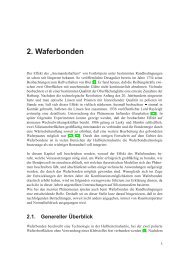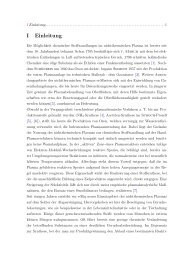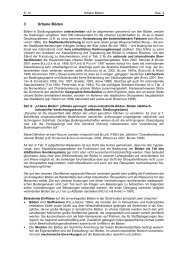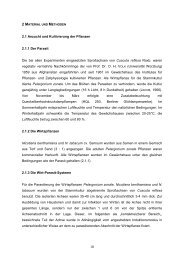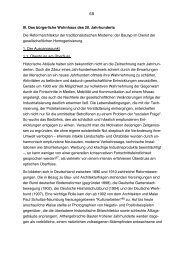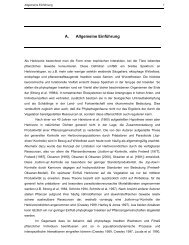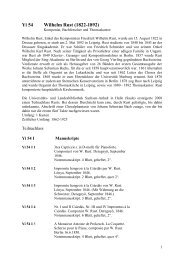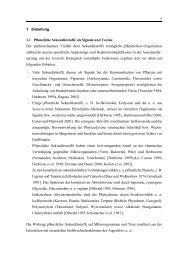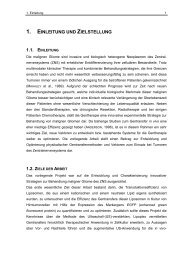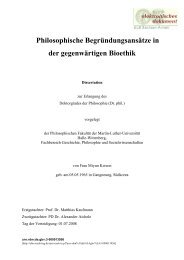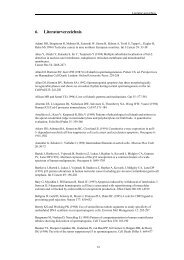1 Check-list of Cladosporium names Frank M. DUGAN, Konstanze ...
1 Check-list of Cladosporium names Frank M. DUGAN, Konstanze ...
1 Check-list of Cladosporium names Frank M. DUGAN, Konstanze ...
Create successful ePaper yourself
Turn your PDF publications into a flip-book with our unique Google optimized e-Paper software.
= <strong>Cladosporium</strong> herbarum (Pers.: Fr.) Link, Ges. Naturf. Freunde Berlin Mag. Neuesten<br />
Entdeck. Gesammten Naturk. 7: 37 (1816)!.<br />
Lit.: SACCARDO (1886: 358), LINDAU (1907: 825), FERRARIS (1912: 342), GONZÁLES-<br />
FRAGOSO (1927: 201).<br />
Notes: “Subaffine Cladosporio noduloso Corda” (see SACCARDO 1886). OUDEMANS (1920–<br />
1923) <strong>list</strong>ed Urtica dioica, Hedera helix and Lonicera tatarica as hosts <strong>of</strong> this species,<br />
although it was described as parasitic on Citrus.<br />
elegans [Penz.] var. singaporense Sacc., Bull. Orto. Bot. Regia Univ. Napoli 6: 60 (1921)!.<br />
T: on leaves <strong>of</strong> Citrus acida (Rutaceae), Singapore, Botanical Garden, Aug. 1917, Baker, No.<br />
4985 (PAD).<br />
= Helminthosporium guareicola F. Stevens, Bot. Gaz. 65: 241 (1918).<br />
≡ Spiropes guareicola (F. Stevens) Cif., Sydowia 9: 303 (1955).<br />
≡ Pleurophragmium guareicola (F. Stevens) S. Hughes, Canad. J. Bot. 36: 797 (1958).<br />
Lit.: SACCARDO (1931: 795), SCHUBERT & BRAUN (2005a: 107).<br />
elegantulum Pidopl. & Deniak, Mikrobiol. Zhurn. 5(2): 182, 193 (1938)!, nom. inval.<br />
T: from a rotting fruit <strong>of</strong> Malus sp. (Rosaceae) and from meat, Ukraine.<br />
Lit.: PIDOPLICHKO (1953: 270).<br />
Ill.: PIDOPLICHKO & DENIAK (1938: 182, Fig. 1).<br />
elsinoes H.C. Greene, Trans. Wisconsin Acad. Sci. 47: 127 (1958)!.<br />
T: on fructifications <strong>of</strong> Elsinoe wisconsinensis (Elsinoaceae) on Desmodium illinoense<br />
(Fabaceae), USA, Wisconsin, Lafayette Co., Ipswich near Platteville, 16 Aug. 1951, H.C.<br />
Greene (BPI 426465A, BPI 426465B; WIS: isotypes).<br />
= Dendryphiella infuscans (Thüm.) M.B. Ellis, Dematiaceous Hyphomycetes: 500 (1971).<br />
Lit.: HEUCHERT et al. (2005: 63–64).<br />
Ill.: HEUCHERT et al. (2005: 64, Fig. 25).<br />
entoxylinum Corda, Icon. fung. 1: 14 (1837)!.<br />
T: on wood <strong>of</strong> Pinus sp. (Pinaceae), Czech Republic, Reichenberg, Corda (PRM 155726).<br />
Lit.: SACCARDO (1886: 353), LINDAU (1907: 811, 1910: 796), OUDEMANS (1919, 1923).<br />
Ill.: CORDA (1837: Tab. 3, Fig. 202).<br />
Notes: Excluded, no <strong>Cladosporium</strong> s. str. This species has to be excluded from <strong>Cladosporium</strong><br />
s. str. The conidiogenous cells are unilocal, determinate or occasionally percurrent, the<br />
conidiogenous loci and conidial hila are unthickened and non-coronate. This species is rather<br />
taeniolella/xylohypha-like. Several collection under ‘<strong>Cladosporium</strong> entoxylinum’ proved to be<br />
<strong>Cladosporium</strong> herbarum s. lat. (e.g., on wood <strong>of</strong> Abies excelsa, Bohemia, Krypt. exs. 2837,<br />
PRM 481966; on wood <strong>of</strong> Carpinus betulus, Austria, Wiener Wald, May 1936, K. Keissler,<br />
PRM 657474). The fungus described and illustrated from China by ZHANG et al. (2003) as<br />
‘<strong>Cladosporium</strong> entoxylinum’ is quite distinct and the name is misapplied. OUDEMANS (1923)<br />
<strong>list</strong>ed C. entoxylinum as pathogen <strong>of</strong> Sambucus racemosa (Caprifoliaceae).<br />
epacridis McAlpine, Victoria Natura<strong>list</strong> 17(10): 186 (1901)!.<br />
T: on living leaves <strong>of</strong> Epacris impressa (Epacridaceae), Australia, Victoria, Caulfield, Aug.<br />
1900, C. French (VPRI).<br />
Lit.: SACCARDO (1902: 1058).<br />
Notes: Excluded, but taxonomic status not yet clear.<br />
epibryum Cooke & Massee, in Cooke, Grevillea 17(84): 76 (1889)!.<br />
T: on capsules <strong>of</strong> various mosses, USA, E.G. Britton (K).<br />
Lit.: SACCARDO (1892: 605).<br />
epichloës Lobik, Bolezni Rast. 17(3–4): 189 (1928)!.<br />
T: on stroma <strong>of</strong> Epichloë typhina (Clavicipitaceae) on Bromus inermis (Poaceae), Russia,<br />
‘Leyss., Bezirk v. Piatigorsk, im Walde am Abhange d. Berges Maschuk, bei d. Lermontowschen<br />
Haltestelle’, 26 Sept. 1923 (LE 40522: holotype).<br />
Lit.: HEUCHERT et al. (2005: 18–19).<br />
Ill.: LOBIK (1928: Tab. 8, Fig. 86), HEUCHERT et al. (2005: 18, Fig. 2).<br />
Host(s)/substrate(s) & distribution: on Epichloë typhina; Europe (Austria, Germany, Russia).<br />
34



